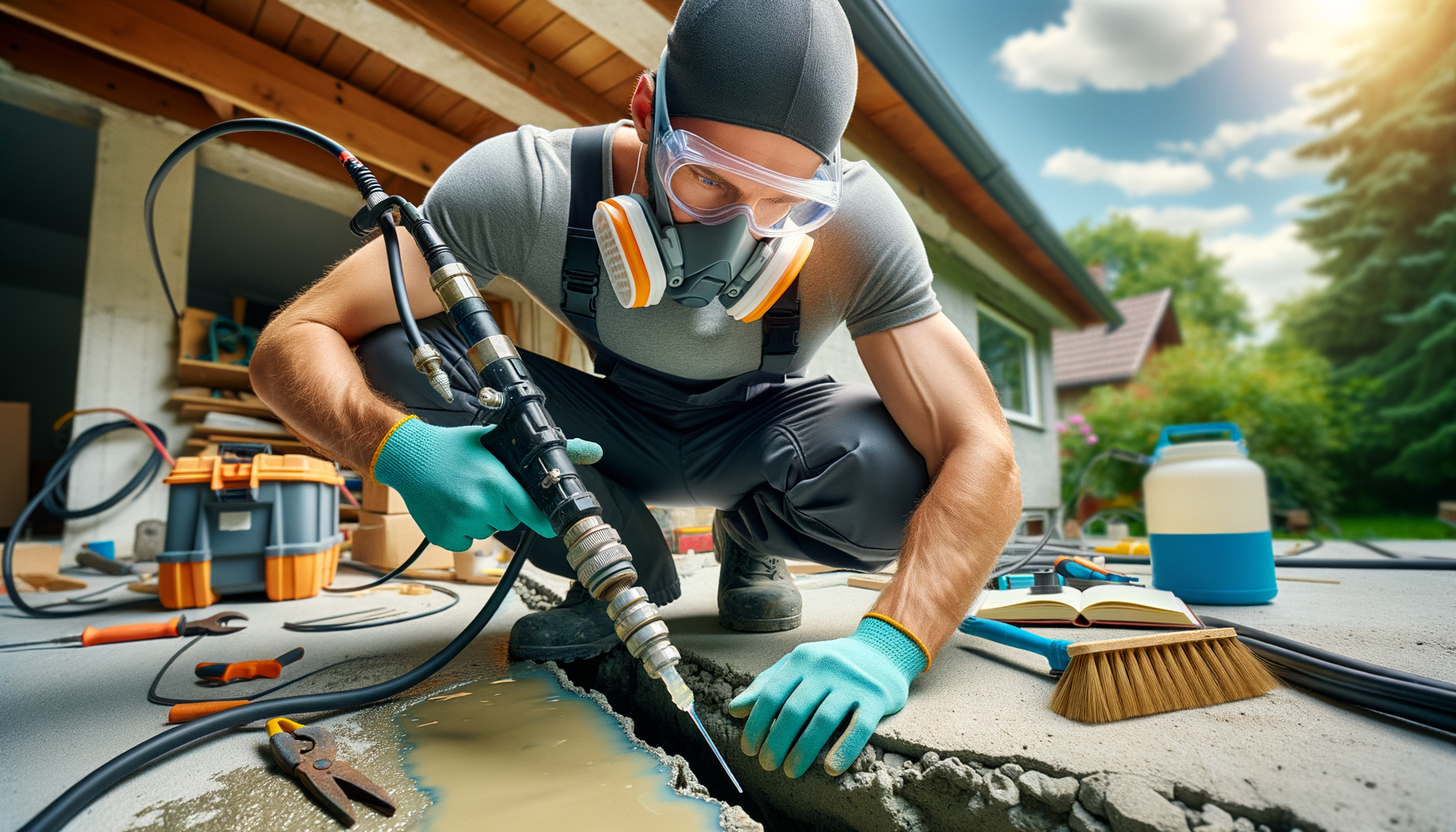What is Epoxy Foundation Crack Repair?
Understanding Epoxy Foundation Crack Repair
What is it?
Epoxy foundation crack repair means using a special two-part glue, called epoxy, to fix cracks in concrete. Epoxy is strong and makes the concrete tough again.
Why use epoxy?
- It’s super strong and makes the crack area just as strong as the original concrete.
- It’s a lasting solution.
- It stands up to water and chemicals.
Why Foundations Crack
Knowing why cracks happen can help you stop new ones from forming.
- Soil Movement: When the soil under your house moves, it can cause cracks.
- Temperature Changes: Concrete can crack when it gets hot or cold.
- Water Pressure: Water pressing against your foundation can cause cracks.
- Bad Building: Using bad materials or not building the foundation right can make it crack.
Finding Cracks
Types of Cracks
Not all cracks are the same. Here are the types:
- Tiny Cracks: Small and thin. Not usually a big problem but keep an eye on them.
- Big Cracks: Wide cracks can mean trouble and might need fixing right away.
- Horizontal vs. Vertical:
- Horizontal cracks can be serious.
- Vertical cracks are usually less of a problem but still need watching.
Checking for Cracks
Look for cracks often so you can fix them before they get worse.
- Do It Yourself: Use a flashlight to check for cracks inside and outside.
- Call a Pro: If you see cracks bigger than 1/4 inch or other signs of trouble, get an expert.
- Tools You Need: Tape measure, flashlight, notebook, camera.
- Take Notes: Write down where the cracks are, how big they are, and take pictures.
Getting Ready to Repair Cracks
What You Need
-
Materials:
- Epoxy resin
- Injection ports
- Plastic scraper
- Epoxy paste
-
Tools:
- Injection gun
- Wire brush
- Vacuum
- Safety gear (goggles, gloves, mask)
Being Safe
- Wear Protective Gear: Gloves, goggles, and a mask.
- Ventilate: Make sure the area is well-ventilated.
- Handle Carefully: Follow the instructions carefully and avoid skin contact with epoxy.
How to Fix Cracks with Epoxy
Cleaning the Crack
Cleaning is important for a good repair.
- Remove Dirt: Use a wire brush to scrub the crack.
- Vacuum: Clean out all the dust and debris.
Setting Up Injection Ports
- Place Ports: Insert injection ports along the crack, about every 6 to 12 inches apart.
Mixing and Using Epoxy
- Mixing: Follow the instructions to mix the two parts of the epoxy well.
- Injecting: Start from the bottom and work upwards, injecting the epoxy until it comes out of the next port.
Letting it Cure and Finishing
- Wait: Let the epoxy cure for 24-48 hours, as the instructions say.
- Remove Ports: Take out the injection ports after curing.
- Smooth Surface: Use a plastic scraper to smooth the epoxy.
Tips for Using Epoxy
Best Practices
- Start from the Bottom: This pushes out any air in the crack.
- Keep Pressure Steady: Use even pressure when injecting the epoxy.
- Watch for Leaks: Seal any leaks quickly.
Mistakes to Avoid
- Don’t Skip Cleaning: Make sure the crack is clean for good bonding.
- Fill Correctly: Don’t overfill or underfill the crack.
- Wait for Curing: Let the epoxy cure properly before handling it.
Keeping Your Foundation Strong
Regular Checks
- How Often: Check for new cracks twice a year or after big weather changes.
- What to Look For: New or wider cracks and signs of water leaks.
Preventing Cracks
- Water Control: Make sure water drains away from your house.
- Good Drainage: Install drains or sump pumps if needed.
- Be Careful with Landscaping: Avoid planting trees too close to your foundation.
Frequently Asked Questions
Should I Fix It Myself or Call a Pro?
- Small Cracks: You can often fix these yourself.
- Big Problems: If it’s serious, you might need a pro.
How Long Does the Repair Last?
- Longevity: Good epoxy repairs can last for years.
- What Affects It: Quality of the epoxy, how well you apply it, and ongoing care.
Is Epoxy Good for All Cracks?
- Good for: Small and hairline cracks.
- Not Good for: Big structural problems or cracks that keep moving.
Final Thoughts
Regular checks and repairs can prevent bigger problems. For serious issues, consult a professional. Done right, epoxy repairs can make your foundation strong again, keeping your home safe.


Leave a Reply